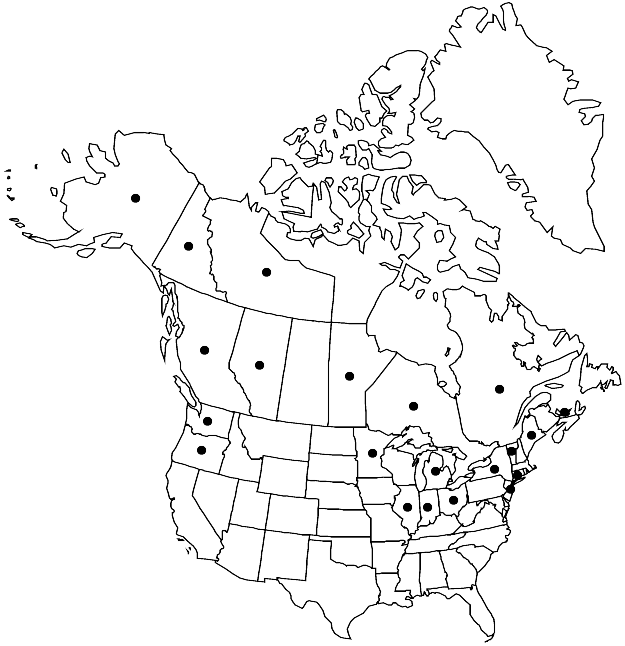Difference between revisions of "Hamatocaulis vernicosus"
Lindbergia 15: 27. 1989.
FNA>Volume Importer |
FNA>Volume Importer |
(No difference)
| |
Revision as of 19:46, 24 September 2019
Plants medium-sized to large, not turgid, green, brownish, variegated green and red, or rarely almost entirely red. Stems ± pinnate; shoot apices often hooked. Stem leaves with red transverse sub-basal zone or sometimes larger parts of leaf red, ovate, concave, strongly or sometimes slightly plicate, 0.6–1.1 mm wide; base ± erect, slightly constricted at insertion; apex short- or long-acuminate.
Habitat: Mineral-rich, often slightly nutrient-enriched, spring-influenced habitats, lakeshores
Elevation: low to moderate elevations (0-1400 m)
Distribution

Alta., B.C., Man., N.W.T., Ont., P.E.I., Que., Yukon, Alaska, Conn., Ill., Ind., Maine, Mich., Minn., N.J., N.Y., Ohio, Oreg., Vt., Wash., West Indies (Dominican Republic), n South America (Colombia, Venezuela), Eurasia.
Discussion
Hamatocaulis vernicosus is widely distributed but rarely common, seemingly rare or absent in the Arctic, in the northern-central parts of the continent, and in most oceanic areas. The species is usually easily recognized by the distinctly plicate stem leaves having erect bases and suddenly curved distal parts. The stem leaves lack differentiated alar cells and the stem lacks a central strand and hyalodermis. Molecular studies have revealed that H. vernicosus consists of two cryptic species in Europe. Molecularly studied North American material (from Minnesota) belongs to one of these, but since the other species is known from South America, it could occur in North America as well. Much material originally filed under H. vernicosus in herbaria examined belonged to other species, mainly to Palustriella falcata, Sanionia uncinata, and Scorpidium cossonii; almost all earlier species of Drepanocladus (in the broad sense) have been confused with H. vernicosus.